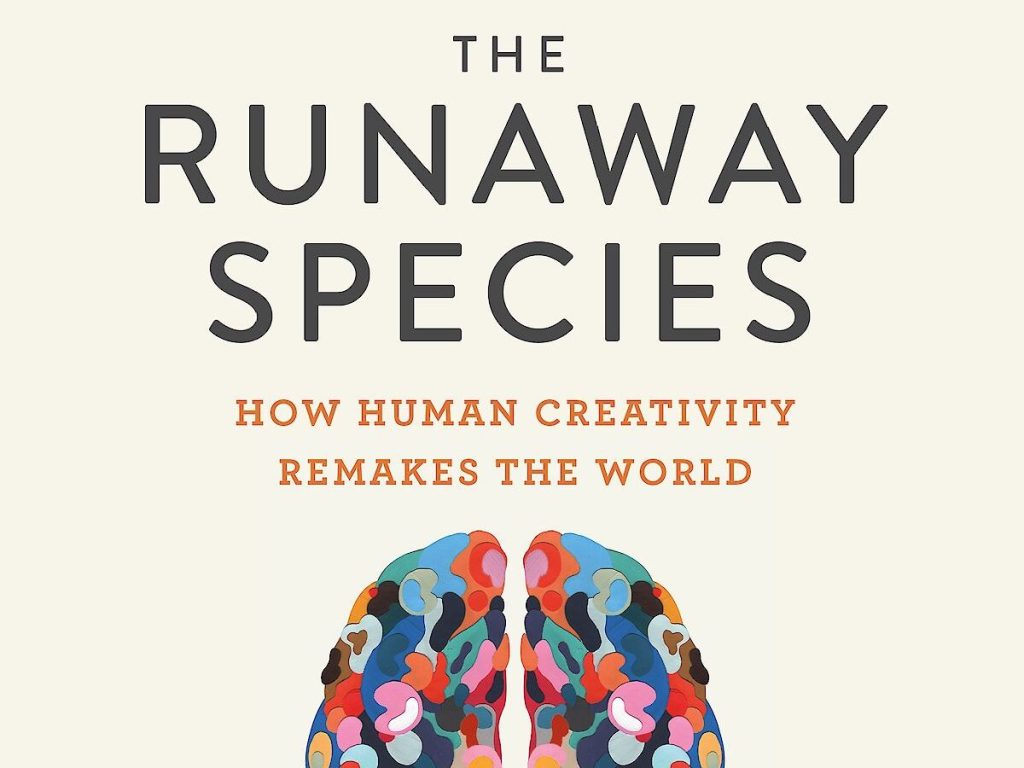Creativity was in the past considered a sort of ‘magical’ talent belonging to special people, such as artists or musicians who were gifted with a peculiar aptitude that common humans could rarely grasp.
In recent years the interest for creativity has sharply grown as it has become evident that creativity is a human capacity that is embedded in common people -as much as in geniuses- and everyone can activate capacity to develop original ideas and creative thinking, both in any ordinary as well as extraordinary conditions.
“How Human Creativity Remakes The World”
“The Runaway Species” -brilliantly written by neuroscientist David Eagleman and composer Anthony Brandt– is an intriguing journey to explore the work of creativity in various circumstances: 
from problem solving in critical situations (like in the Apollo 13 mission) to the invention of modern hi-tech products (such as the iPod and iPhone),
from the striving efforts of artists and composers to create their original, unique masterpieces (like Picasso, Monet and Bach) to architecture, fashion and even hair-style!
Do innovative solutions come from nowhere?
Such a vast overview of practical examples allows the Authors to capture our attention and show that creativity is actually present in our daily life.
In their perspective we are “food-processors” who take in “raw material”, that comprises sensorial inputs as well of the heritage of past experiences, memories, knowledge and efforts of predecessors which may inspire the followers, and return “something new” or newly refashioned.
In this vision new ideas and innovative solutions -being somehow the outcomes of our activity as food processors– do not come from nowhere.
As evidence of such a process, David Eagleman and Anthony Brandt track the inventions that preceded the iPhone to show how the final product was a synthesis of efforts and discoveries made by forerunners in the previous decades.
A world of sparks in the darkness
Referring to the life event of surgeon Anthony Cicoria who became passionated about music and a good composer after being struck by lightening, the Authors confirm their view that new ideas, “instead of being lit aflame by a lightening bolt, arise from interweaving billions of microscopic sparks in the vast darkness of the brain”, where the microscopic sparks might be the bright heritage of previous events upon which we can rely to lit our creativity.
Such a charming image of ‘the microscopic sparks into the vast darkness of our brain’ -like fireflies in a dark summer night- is quite enthralling, even though I have to confess to have been puzzled at the comparison of the intelligence –that led the team of NASA engineers to solve the fault of Apollo 13 or the team around Steve Jobs to design an innovative device like the iPhone– with the inspiration of artists like Monet and Picasso or the intuition of a composer like Bach. This is an area that would be interesting to explore to fully discover the quality of creativity in different realms.
Rising curiosity and questioning -rather than providing exhaustive answers- seems to me the best feature of “The Runaway Species” !
“Cultivating Creativity”
The third part of the book is dedicated to “Cultivating Creativity” which contains three meaningful chapters: “The creative Company”, “The Creative School” and “Into the Future”, all of them firing the interest and curiosity of the readers at the highest.
I would like to pay here some attention to “The Creative School” as education has been my field of engagement and commitment for the last four decades. The chapter begins with a clear statement about the current school model and what is a desirable direction. This introductory paragraph deserves to be quoted in full.
“The Creative School”
“We’re stuck in an educational system born during the Industrial Revolution, in which the curriculum was regularised, children listened to chalkboard lectures, and school bells replicated the factory bells that signalled a change of shift. That model doesn’t prepare our students well for an advancing world, one in which jobs are rapidly redefined and the prizes go to those who can generate novel opportunities“ [from “The Runaway Species – How creativity remakes the world: Promoting creative, imaginative thinking”]
The Authors describe several examples taken from the practice of particular teachers or progressive schools where children are encouraged to “creative risk-taking”; where teachers may inspire and engage pupils by “making the world more meaningful”; where lessons aim to watering the seeds ; where sciences are bond to the arts and where the arts are paths to knowledge and develop imaginative capacities of the pupils to the fullest.[/vc_column_text][vc_column_text]Efforts to explore such an innovative direction often rely on the good will of teachers and parents but the Authors also mention that “similar strategies are followed by progressive nursery and primary schools such as Waldorf and Reggio Emilia institutions, where the educational philosophy is based on encouraging children to explore their own interests through creative activities”.
There is more to learn and get inspired by reading “The Runaway Species” as this book is full of sparks to stimulate the active understanding of the world we live in and the challenges that we -and almost our kids- are going to face in a future that is already here… In this respect the final sentence sounds as the ‘legacy‘ of “The Runaway Species”:
“Now close this book and remake the world“
In my understanding that means: enjoying reading! enjoy learning! and ultimately enjoy remaking the world!
vr




